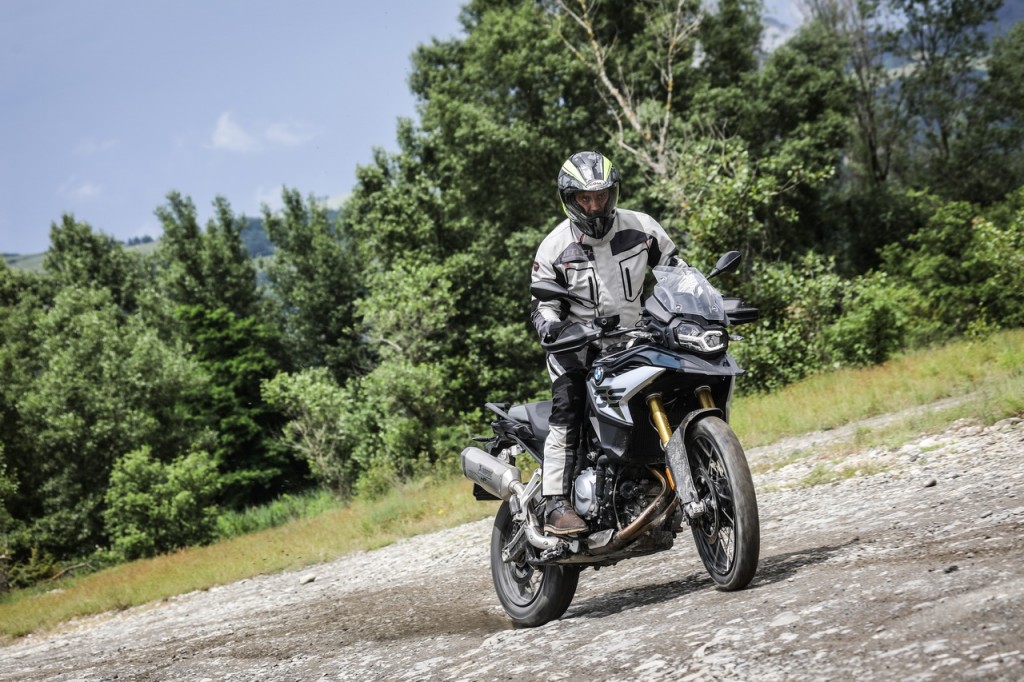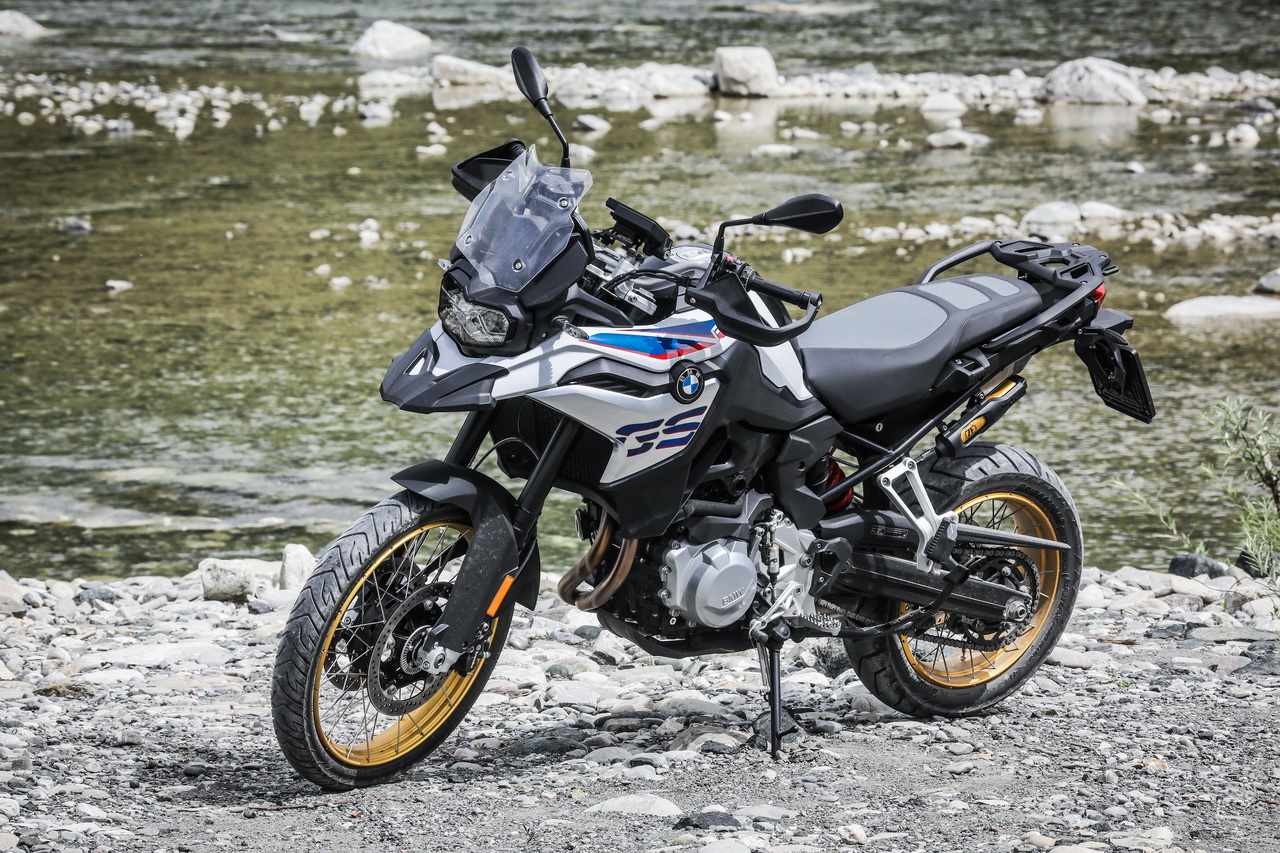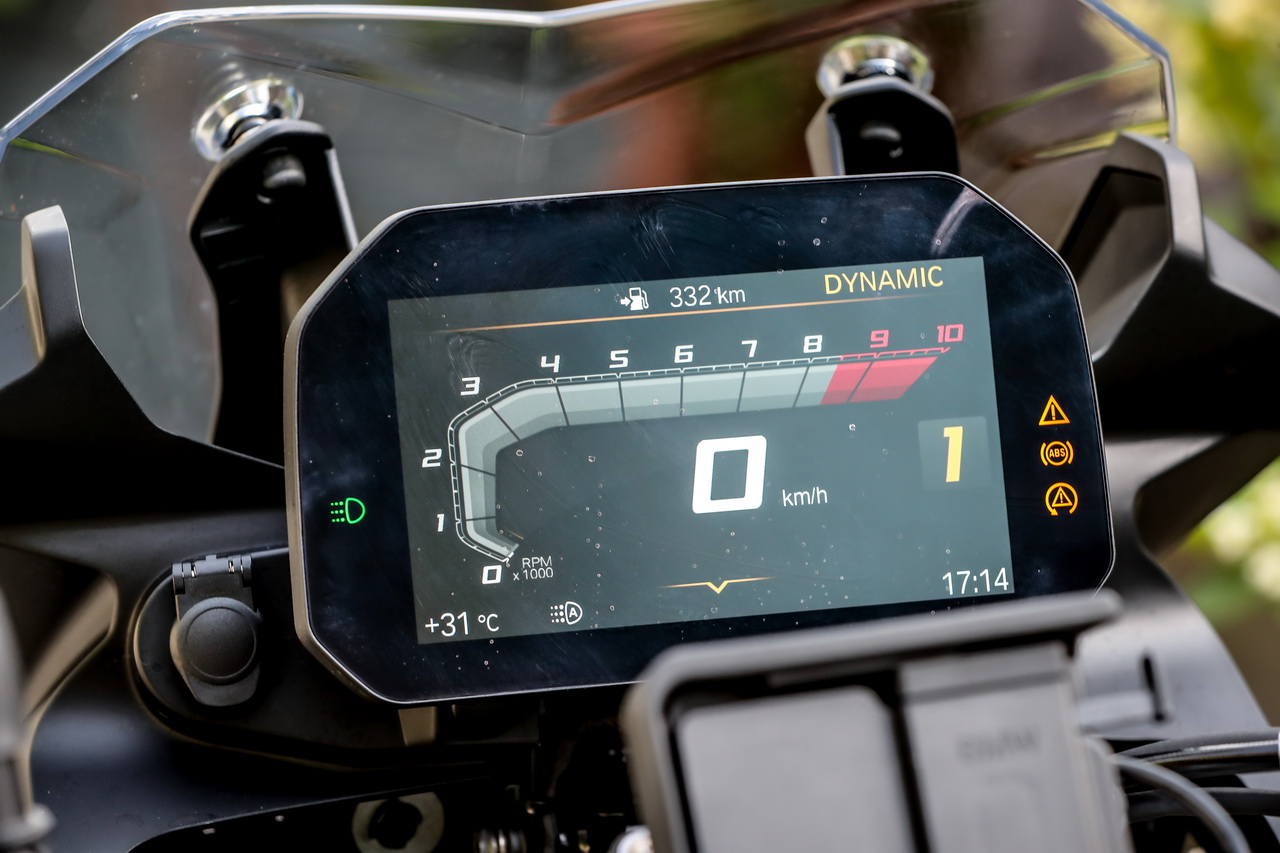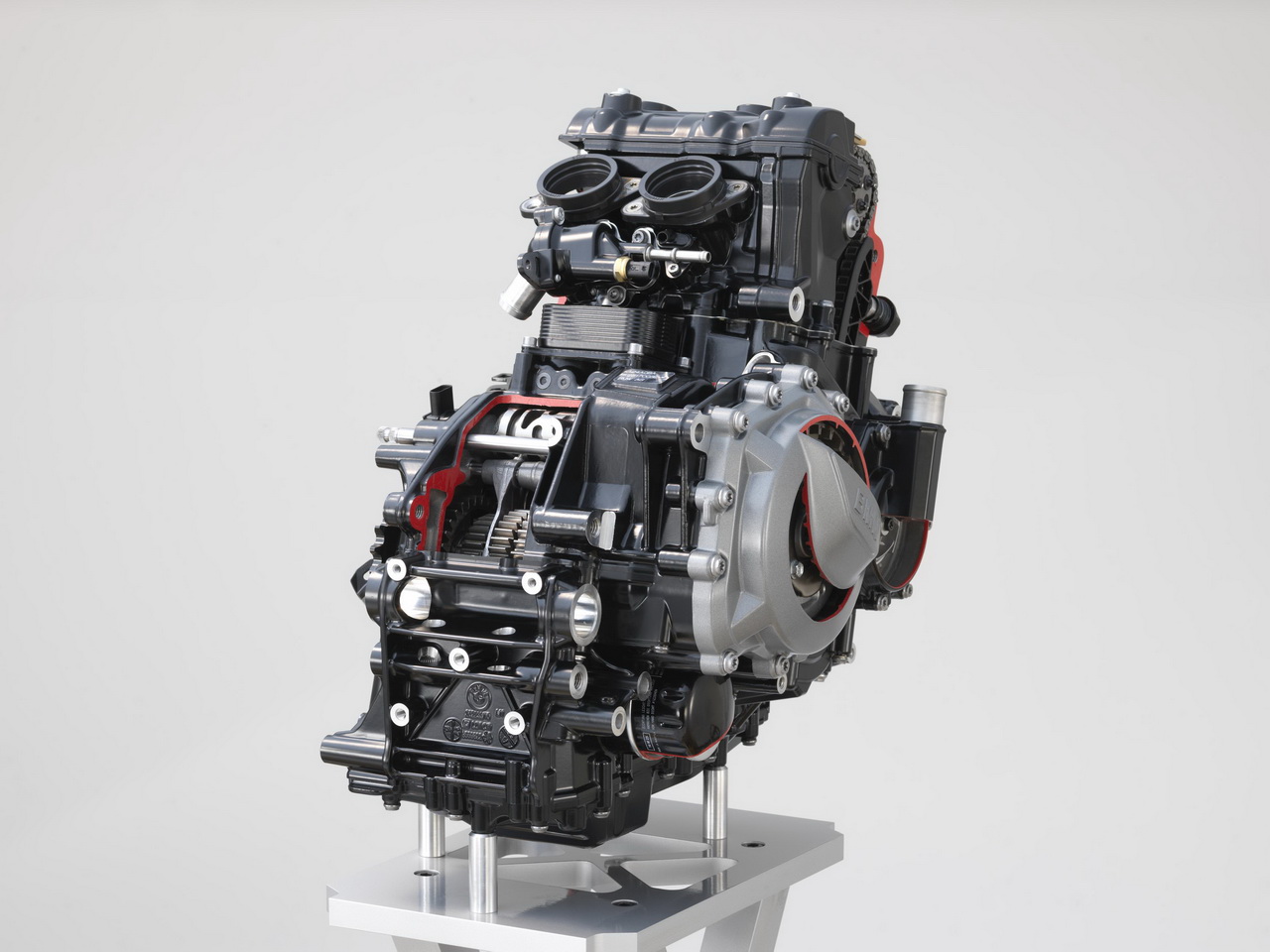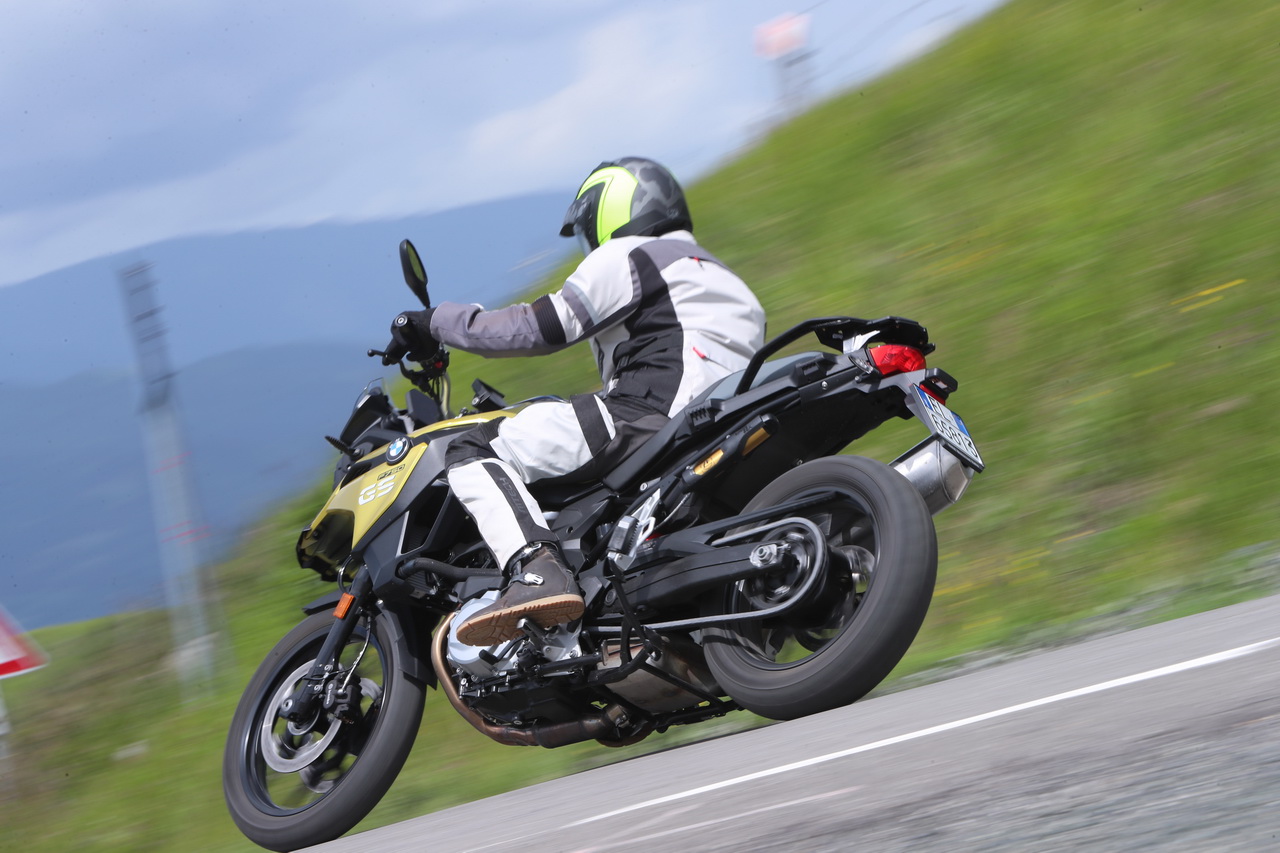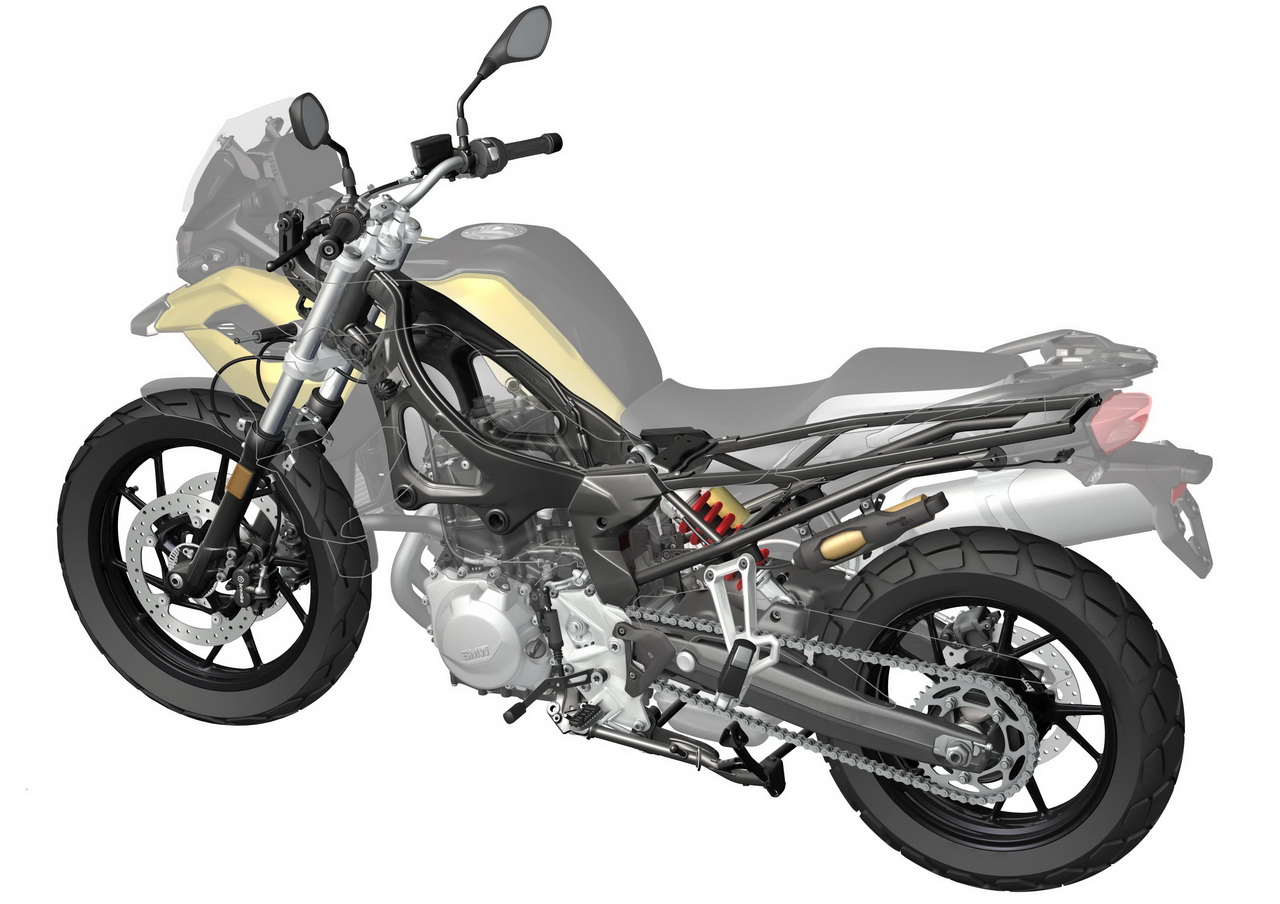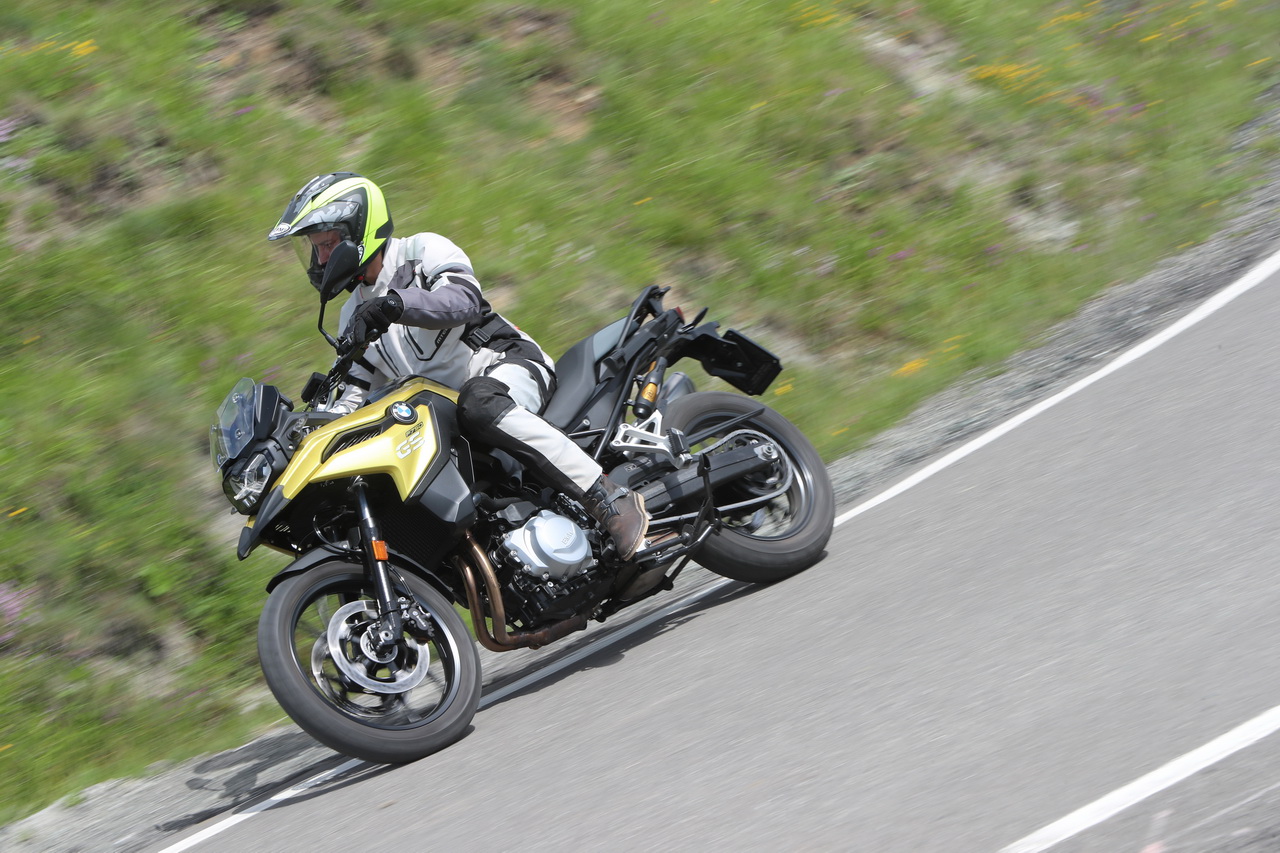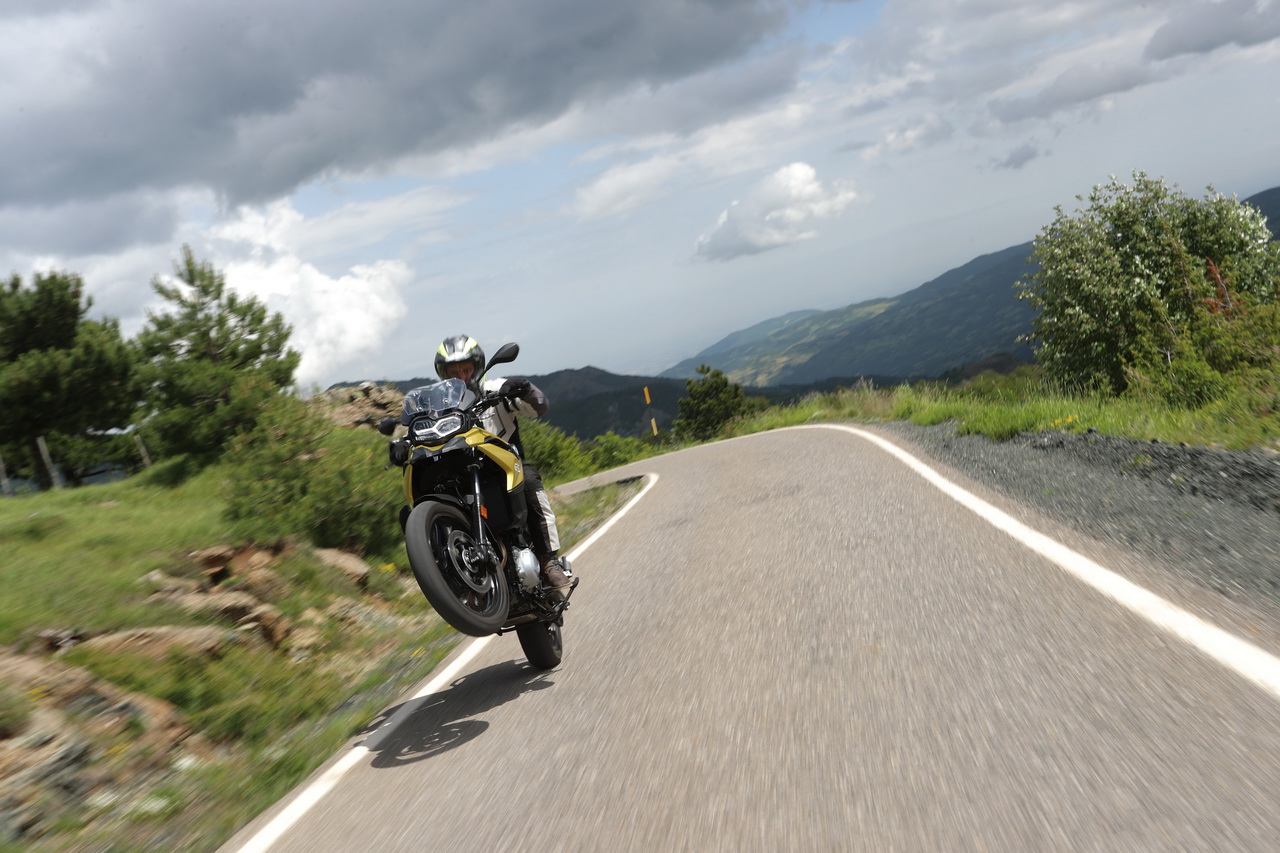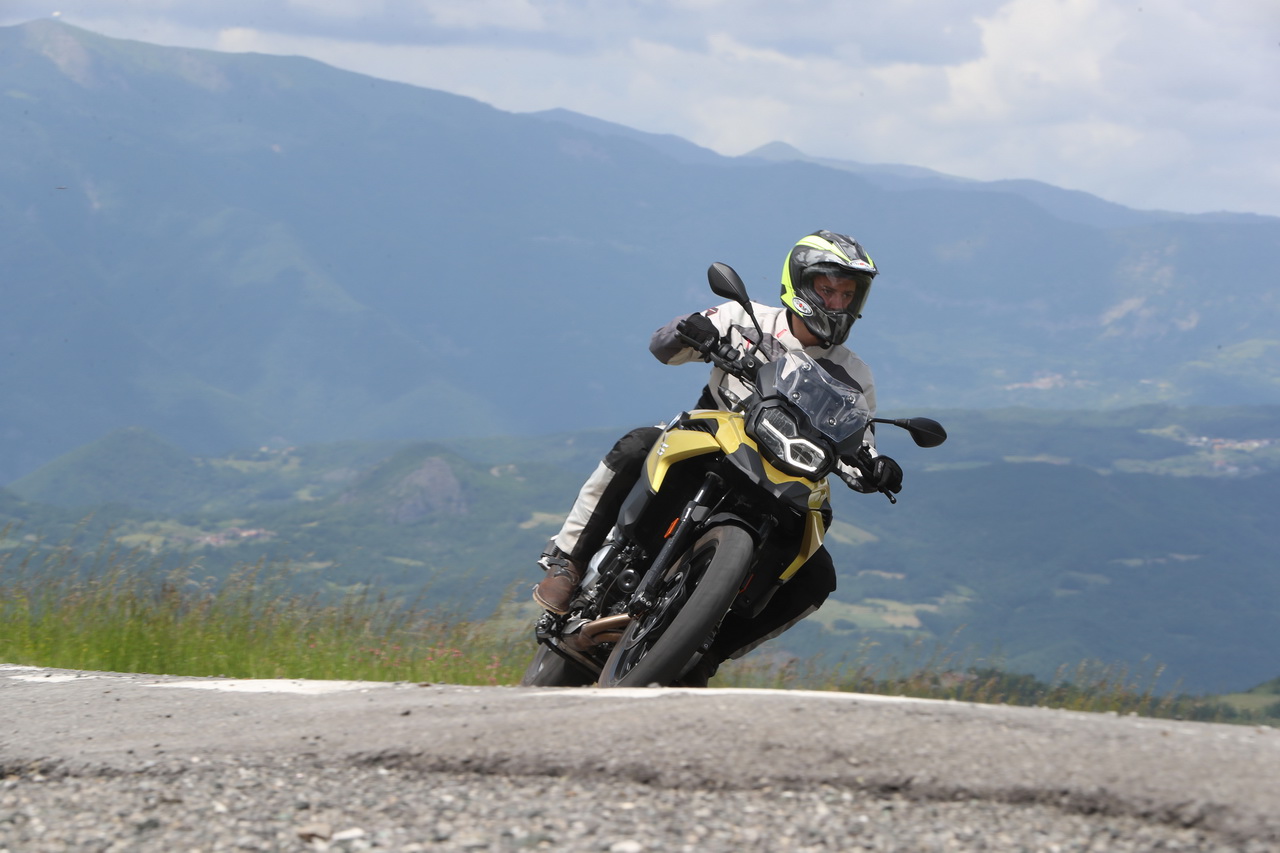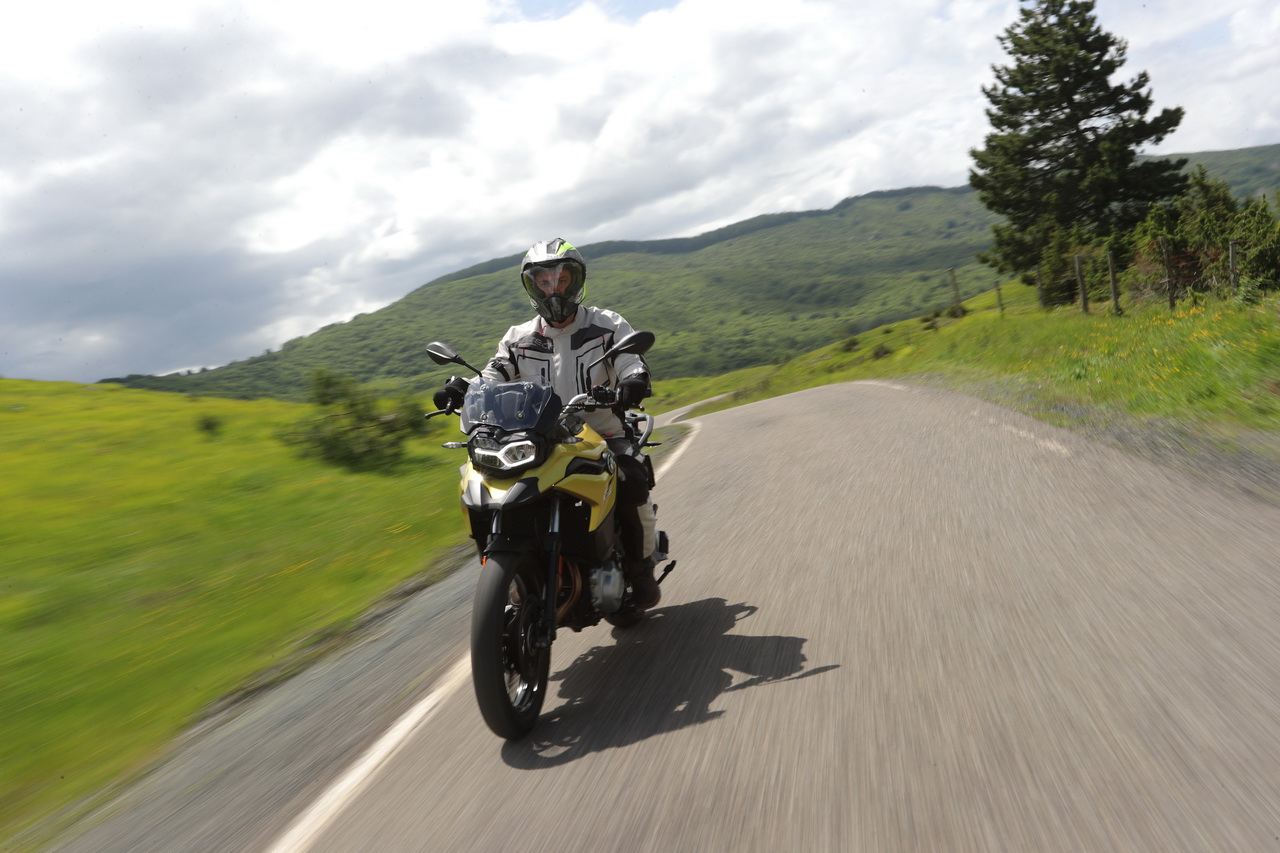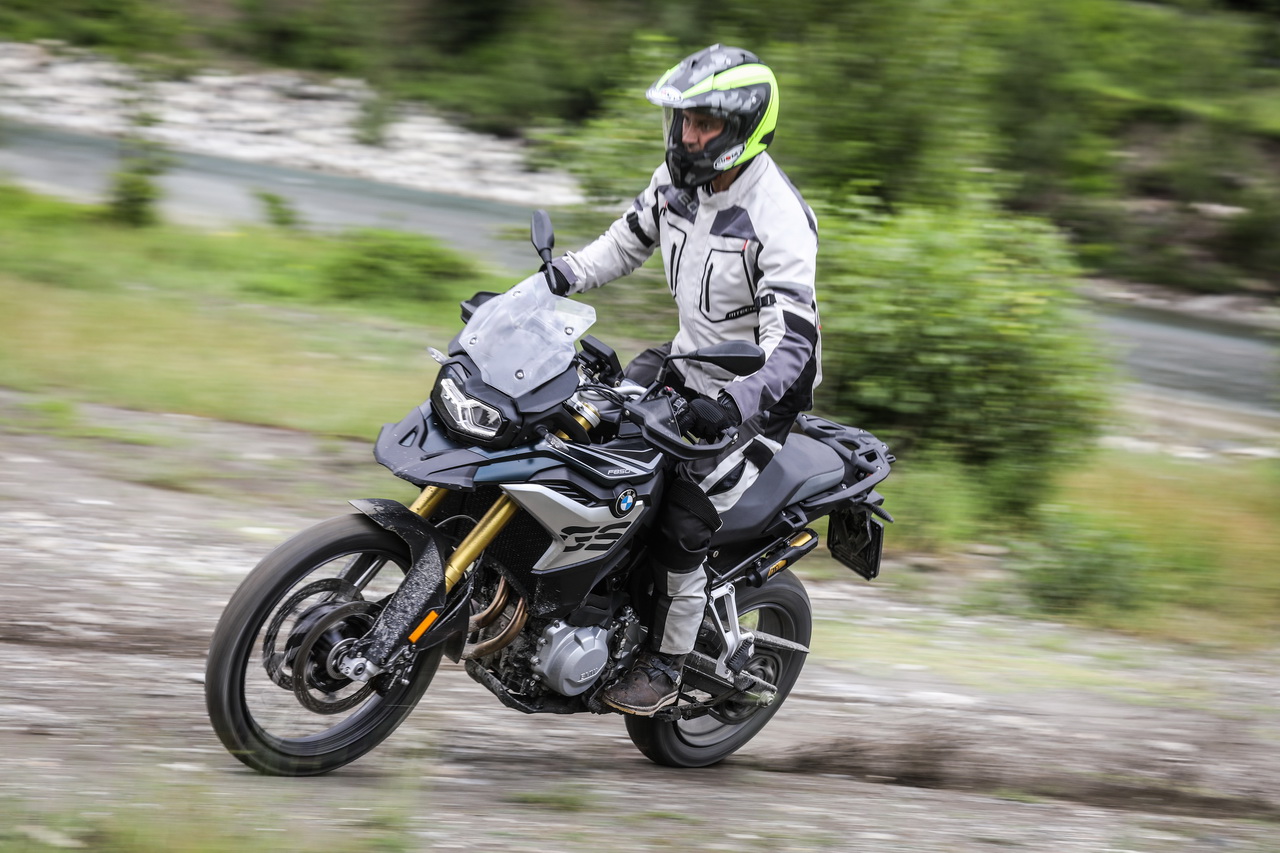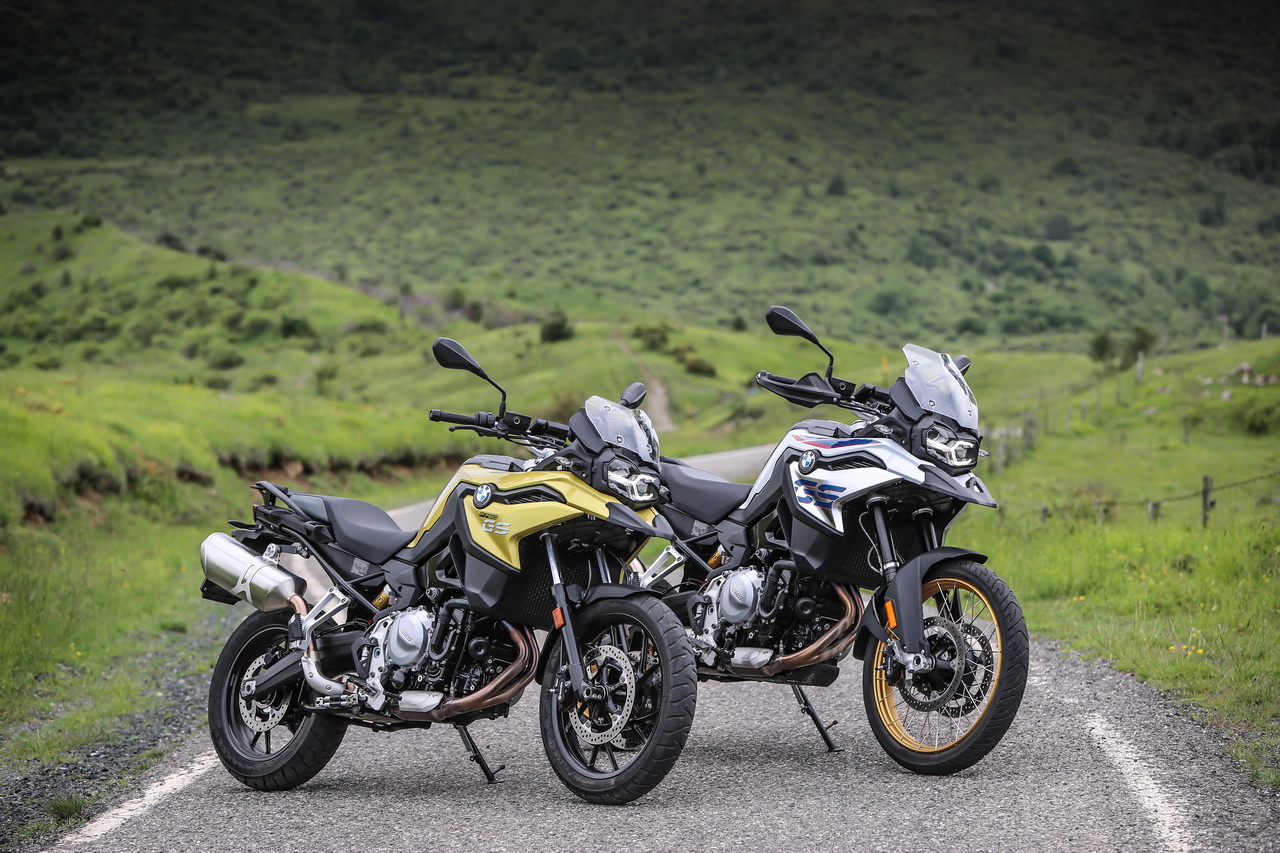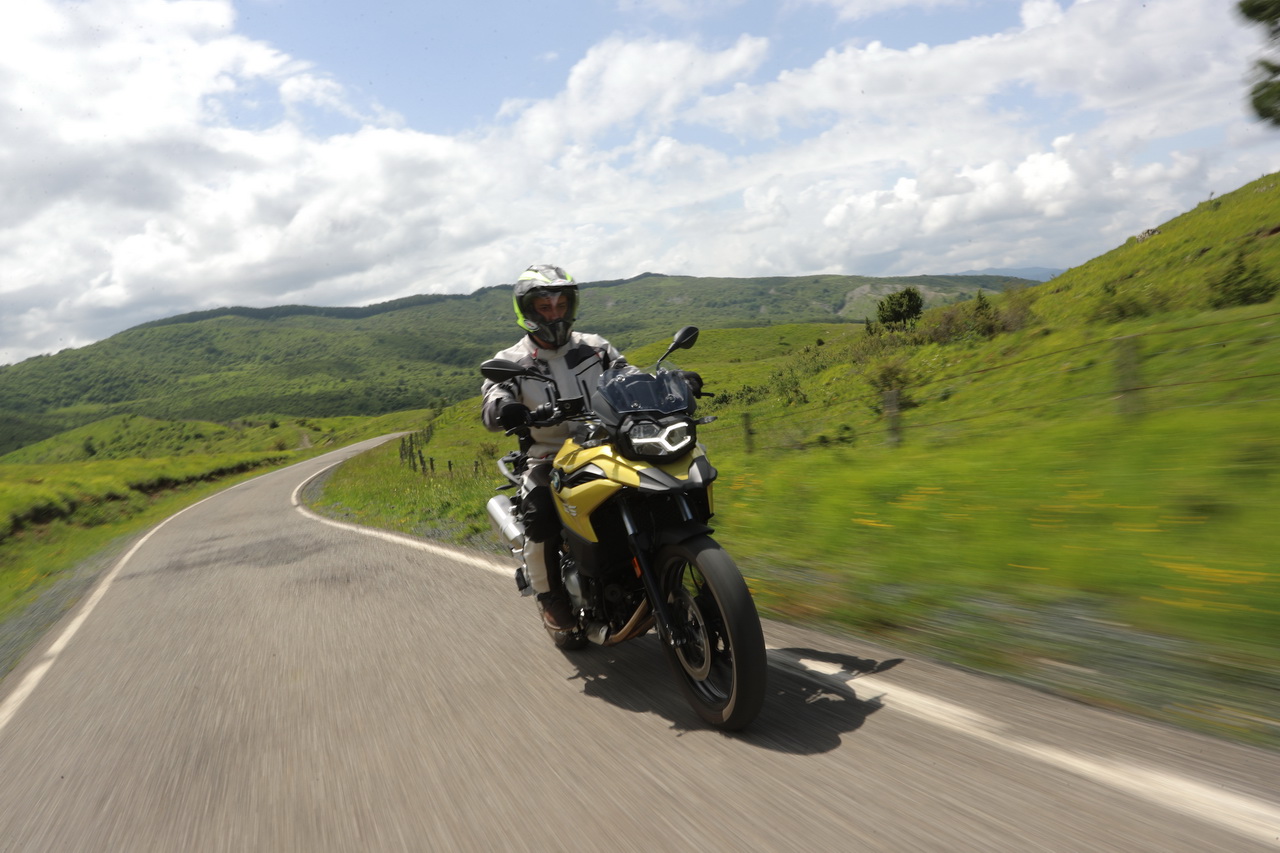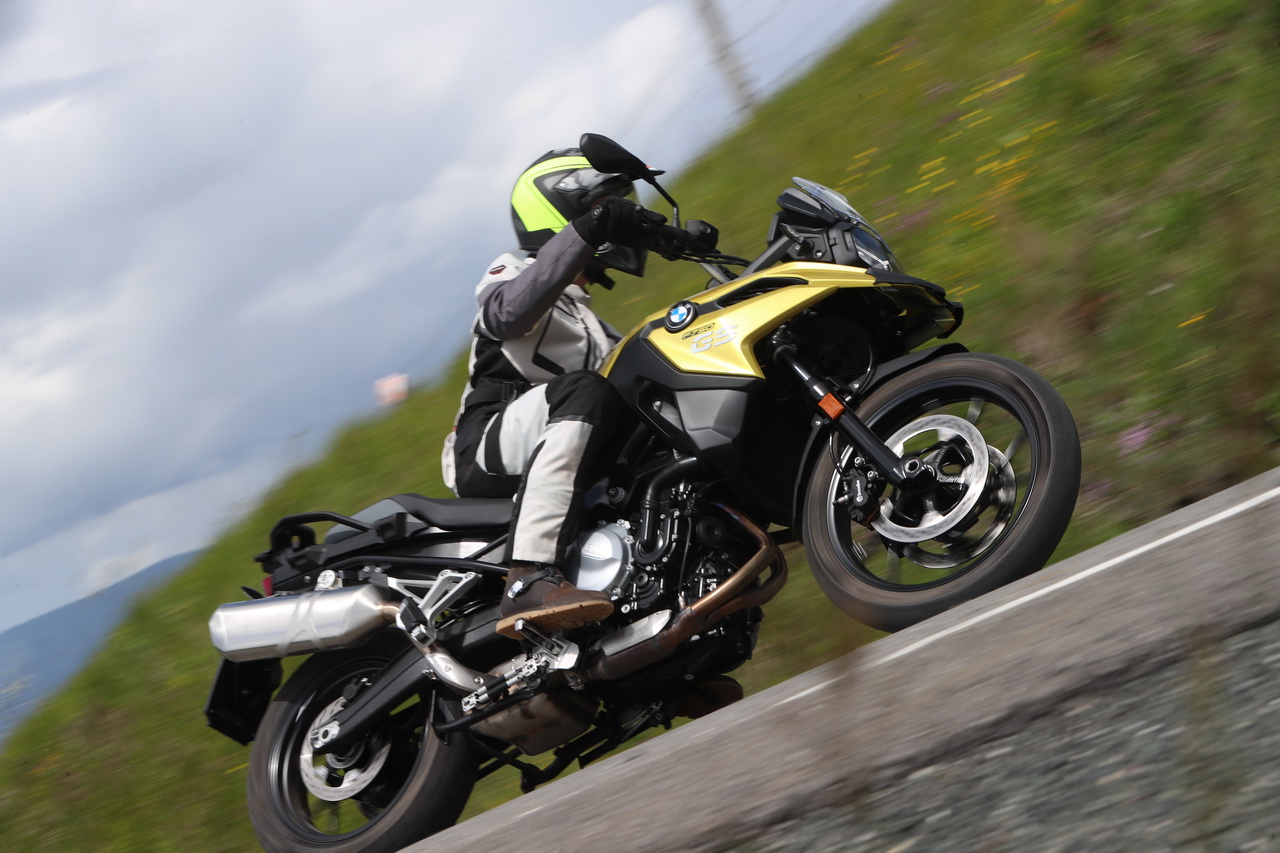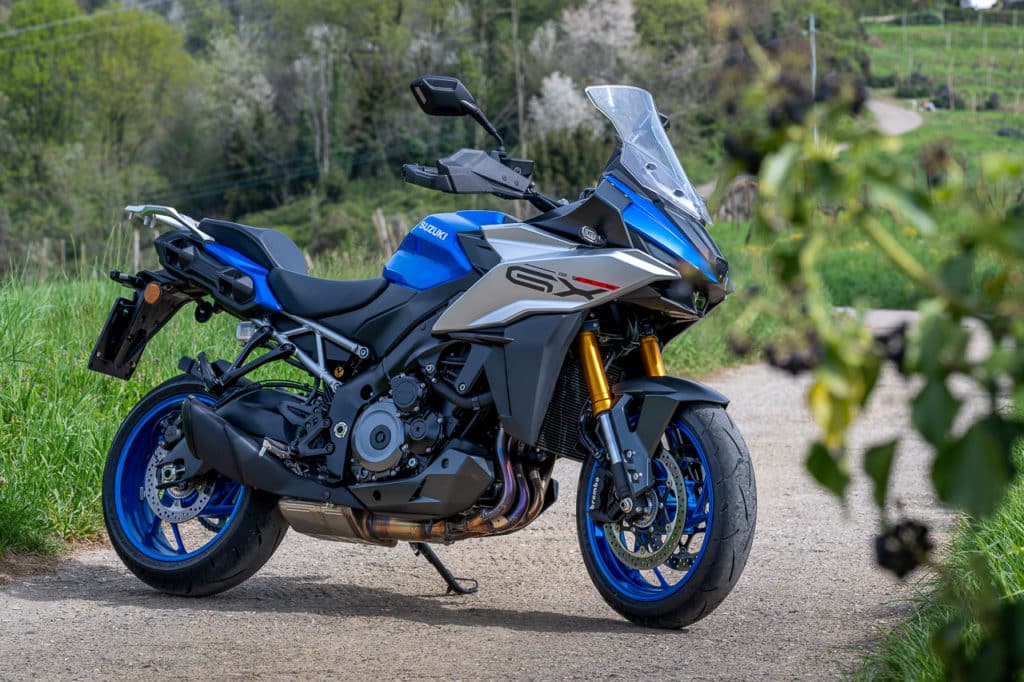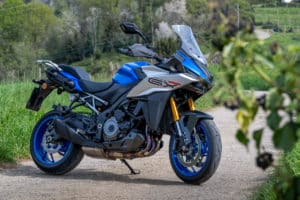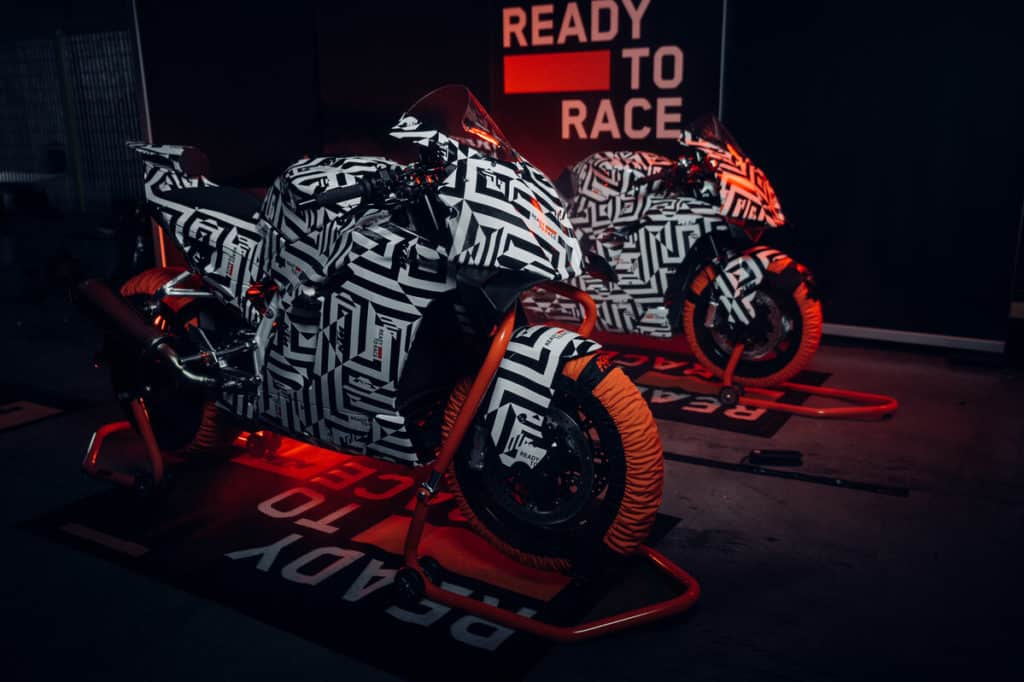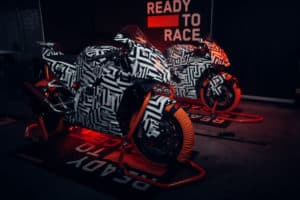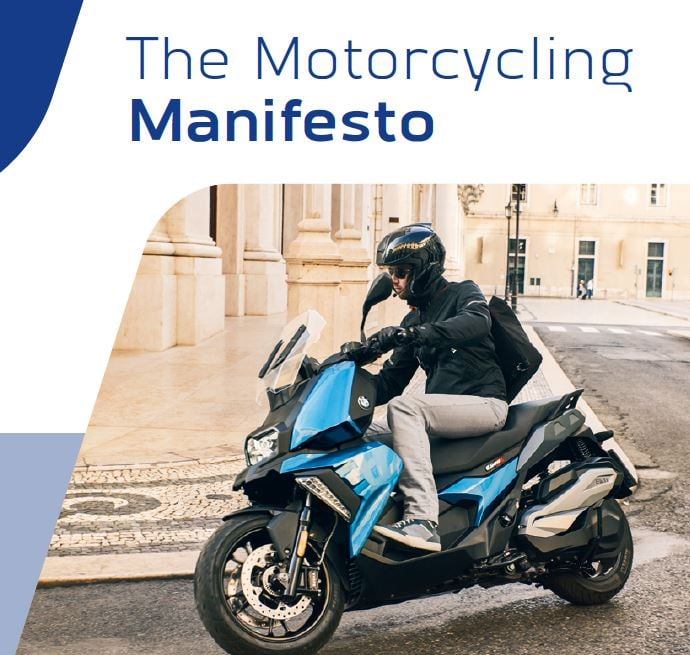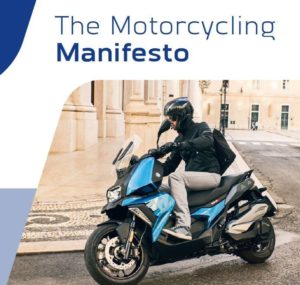BMW F750GS and F850GS, the revolution that scares the competition [ROAD TEST VIDEO]
Everything revolves around a completely new engine, for two bikes rebuilt from scratch
At Eicma 2017 the BMW stand was quite full of new features, including for example the Bagger-derived version of the K1600, the Grand America, or the new C400X scooter. We are testing both right now and you will find them on these pages. The most substantial and awaited novelty, however, was precisely this: the new "F", the 750 and 850 GS. A displacement rising to 853 cc, common to both despite their respective names, a layout that remains a forward-facing parallel twin, but this engine does not derive from the old one of Rotax origin, but rather it is a totally new unit. Thanks to differences in the camshaft and electronics, it delivers 77 and 95 horsepower, for the 750 and 850GS respectively. For both, the equipment and attention to detail rises.
Entry level? Absolutely not, especially now
The medium GS (remember that it is no smaller than the house, given that the 310 now also exists) are the most suitable for off road, especially the 850, rather than the entry level ones. On the most equipped versions we find the full LED headlight, "connected" LCD instrumentation and even the inertial platform in support of ABS-Pro and ASC traction control, capable of working best even with the bike tilted. For those who haven't yet understood, the F850GS puts the Africa Twin in its sights, with similar power and bringing some goodies to the table that its Japanese rival doesn't have. A three-way fight at 95 horsepower, in which we also find the Triumph Tiger 800, also renewed in 2018.
Aesthetics with a more marked "R1200GS family feeling", but not only
They go up in level, you can see it right from their appearance, which is more reminiscent of that of their older sister, the R1200GS. For example in the shapes of the front fender, but not only. In addition to the details and the new look, the transition of the tank from the rear area, now slimmer and tapered, to the classic one between the legs stands out. As was done in the past for its older sister, the "F" also reverses the transmission and exhaust, with the latter now being on the right side, so as not to risk getting burned when getting on the bike, or moving it from a standstill. The development of the tank is then purely vertical, around the center of gravity, to obtain uniform behavior when the fuel level varies. The instrumentation is one of those practically mandatory options, given that with 650 euros the "F" earn quite a bit also in their aesthetic appearance, but above all for the additional functions.
It's called Connectivity (we tried it on the R1200GS at the end of 201, find the article and video here) because Bluetooth connectivity allows you to interface the motorbike with a mobile phone and with a possible hands-free system for the helmet, literally opening up a new world. You can use the phone's GPS via a free application to have a navigator, albeit a bit basic, on the instrument panel, or listen to music, view notifications on the display and much more. The very useful function then debuts with the 2018 range Emergency Call 3 modes. The motorbike can make a call, with indication of the GPS position, in immediate automatic motion, in the event of a serious accident, with possible deactivation in 30 seconds if the impact is minor, or in manual mode via the button on the handlebar.
A curiosity, if you ask yourself what those sort of ZF-branded "syringes" on the left side of the motorbikes, in the area under the saddle, are, they are the oil tank and the engine which, in the presence of Dynamic ESA, regulate the preload of the rear mono spring.
The heart of the project is the revolutionized twin-cylinder
One element helps, perhaps more than anything else, to understand the reasons for the revolution that BMW wanted for its medium-displacement engine: the crankshaft placed 50 mm lower. An engine that was designed in Germany, which is produced and assembled in China, in a factory where, however, to date the staff is predominantly German, precisely because the European factories have reached their maximum production capacity, rather than for reasons linked to the reduction of costs. Back in Teutonic land, the engines are checked and tested before being assembled with the motorbike frame. A project that abandoned the idea of making the twin-cylinder a small boxer in terms of sound and character, to move on to something decidedly more effective. In terms of mass centralization, compactness, vibration reduction and delivery curve. It goes from complex technical solutions, such as the presence of 3 balancing countershafts, to a much simpler and more compact one which provides 2. Above all, the timing changes, with firing of the two cylinders at 270 and 450°. This gives a completely different sound, now more like V2 (even if in reality it has its own well-defined and unique character), as well as a greater back to the mids. There are 10 more horses for the 850, which gives a +9 Nm for the torque, now 92 Nm in its maximum value, which reaches 6.250 rpm. More than the peak power, a lot of work was done on the delivery and back of the engines. As we will see, the 750 also has a new character and liveliness, which go well beyond the 2 horsepower gained. The F850GS offers greater performance, combined with a wickedness that comes from a sharper delivery curve.
Thanks to its characteristics, with centralized masses and greater compactness, it was possible to mount the new engine more inclined forward (13 degrees from the previous 8). We then find the finger rocker arms for distribution, now almost a standard at BMW, given that from the S1000RR they are gradually spreading to the new engines, including the small mono of the 310. The decompressor was then adopted on both cylinders, in so that a smaller starter motor can be installed, thanks to easier starting of the engine. Determine a technical innovation in which BMW has invested a lot, which beyond the "engineer" complication, produces practical effects that are certainly not marginal. We are talking about the management of the butterflies and the bypass, designed to have perfect air passage in every situation and always optimal combustion. Up to around 3.000 rpm the throttle body actually does not open, but it is the bypass that allows the bike to accelerate, while at any speed and in any situation, the delivery is very homogeneous, with impeccable regularity of operation and with " on-off” substantially reset. The clutch is new, which comes as standard withslipper and a system "self-reinforcing”. Thanks to the different behavior of the disc ramps, with a different action when pulling or releasing, it was possible to envisage the use of springs which cause a reduced effort on the lever. While driving, all this can be felt markedly by keeping a finger on the lever, which changes its resistance significantly if you are accelerating or if you close the throttle. The exhaust is also all new and substantially ready for Euro 5 standards. Of the 3 separate chamber type, with the catalyst very close to the collectors, it will not change shape in 2020, but will only be updated. The position of its elements also determined the shape of the "banana" swingarm, to obtain the space necessary for the exhaust. Among the options also the QuickShift, in both directions, to change gear and forget about the clutch, even if we were able to see that it is not the smoothest in operation and its use is recommended only with somewhat dynamic driving.
Everything is new on the cycling front too
Il new frame it goes from the old trellis to this pressed type, more rigid and profoundly modified to accommodate a completely different engine, including the position of transmission and exhaust. It is now stiffer and more precise, thanks to the new one monocoque structure and is paired with suspensions with new geometries. The technical partner also changes, which it is now Showa and no longer Marzocchi. The choice of a classic solution is confirmed for the entry level F750GS, one with upside down legs and a larger diameter (43 mm instead of 41), for the 850, both can be equipped with Dynamic ESA for the rear, with preload adjustable with a button. Another new feature are the spoked rims with tubeless tires as standard on the 850GS, always 17" at the rear and 21 at the front. A motorcycle increasingly oriented towards off-road use, as demonstrated by the approval with dedicated tyres, such as the Metzeler Karoo III, for example. Let us remember that the 750 is instead more aimed at touring, with spoked rims and a 19" front.
The bike is approx 2 cm lower, one of the reasons why, despite the weight increasing by about 10 kg, driving could even seem lighter. THE better arranged masses in fact, they make it easier to manage. For both, both the F750GS and the F850GS, the travel of the fork decreases, but that of the mono increases. On the 750 it goes from 180 mm to 151 at the front, but at the rear it now reaches 177 from the previous 170. For the 850, similarly, the fork travel is now 204 mm (it was 230), but it goes from 215 to 219 behind. The range for saddle height is very wide, given that it can reach 890 mm for the F850GS (perfect for those who love off road), but starting from 770 for the lowered version of the F750GS, ideal for a female audience and in general for those who are not very tall or want to have easy and optimal support on the ground when standing still. New features for the electronics, which can offer, as mentioned, the inertial platform to support ABS Pro (cornering type) and traction control, in order to better manage the brakes and accelerator, even when leaning. In addition to this you can have them up to 5 riding modes, starting from the two standard series (Road and Rain), to which are added (they are part of an optional package) Dynamic, Enduro and Enduro Pro. The latter is activated with a physical plug under the saddle and completely deactivates the ABS, but only at the rear, with a less invasive action than the traction control, which can be completely excluded with the classic button on the left block. With the Pro driving modes, we now have the possibility to modify the parameters of the Dynamic ESA at the rear, as regards the hydraulics. The spring preload, however, remains manually managed, via the button on the handlebar. It ranges from 1 to 3 "helmets", displayed on the instrumentation.
All you need to do is turn on the bike when it's stopped to understand that everything has changed. If the appearance already anticipated it, the sound is even more evident. The heart of the new “F” is something completely different. A clean break with the past which, among other characteristics, brings that of a medium-low character, never seen before. To put it with a joke, with "F" you can now also make monowheels. Having removed the traction controls, the smaller one now raises the front even with just a little help from the clutch, while the more powerful 850 does it in total autonomy, both thanks to the 95 horsepower (+10), but above all due to a significantly increased back .
We start with the touring F750GS
For both the thrust is vigorous already at 4 thousand rpm. We find out by getting on the saddle, first, of an F750GS. The position is comfortable and with well-studied ergonomics. The instrumentation is rich and easy to read, we already know it, given that it is the same one that we got to know on the older sister R1200GS, for example. In addition to the initial learning phase, the only small flaw we find are the alert messages that, in this area with little coverage, the Emergency Call occasionally offers us, precisely due to the lack of coverage. It seems clear that the "F", including this 750 (which is only in name given that it uses the same 853 cc), has filled a good part of the gap that separated the 700/800 from the top of the range. The handlebar controls are the same as the 1200, including the now legendary "big wheel", while the equipment, having the spending power to raise the bar, can come very close to its bigger sisters.
The engine starts right away, is extremely smooth, both due to the practically perfect throttle action, but also due to the always full delivery. The 750 has a more contained power, but is still lively, with 77 horsepower combined with a torque of 83 Nm. We appreciate the handling and the ease with which it can be driven on the curves of these roads in the Piacenza area, a few steps from Trebbia . A "sacred place" of "geeks" riding supersport motorbikes where the F750GS does not disappoint at all. Years ago, an F700GS was the first bike I tested for Motorionline, it's nice to be able to see that it has grown and now has very few defects, such as vibrations, now much lower than in the past, thanks to the new engine.
The F850GS is a completely different bike, with a nastiness never seen before
As mentioned, the engines are all new in character, with a decidedly meaner nature than in the past, but without ever becoming demanding. On the F750 everything is really very easy and the power seems perfect for everyone, docile, but never lazy. The F850GS is a completely different story, on which we get on the bike and in just a few meters it leaves us almost speechless. We used to call it "the little GS", now we can no longer do that. Not so much because of the presence of the G310GS in the price lists, but because now it no longer has anything small about it. It raises the bar in terms of finishes and equipment (unfortunately this however depends a lot on the presence or absence of the many optional extras, whether in packages or not), it puts the turbo in terms of character and performance. The old 800 had improved over time, with its various evolutions, but it remained an engine "without infamy and without praise", from a certain point of view. Easy, excellent for this both for a novice audience and for off road use, but nastiness was certainly not one of its main qualities. Now it's a completely different film, so much so that after a few turns the idea of seeing how it fares compared to an Africa Twin, placing them side by side, becomes almost an obsession for us. We also covered a short stretch off road, appreciating the feeling immediately offered by a motorbike which, despite its increased size and road tires (on the model we tested, but can be had at no additional cost with non-extreme knobby treads), it seems to have become easier in this context, also thanks to better electronics. The suspensions won't have the record-breaking travel of an Africa Twin Adventure Sports (we'll see what the F850GS in Adventure trim will be able to do), but the compromise between use on asphalt and non-tarmac seems to have been decidedly successful. The 21" front is essential when putting the wheels on complex terrain, but they don't make the bike awkward in the fast bends we face on these beautiful roads.
The differences are not only in 18 horsepower (not a few anyway) and in the 21 or 19" front wheels, or in the spoked or spoked alloy wheels. The setting of 750 and 850 is deliberately markedly different. The F850GS is a little less easy, in lean it discounts, even if not in a sensational way, the 21 at the front, but above all it also has a different setting for the riding position, a bit more aggressive also for the handlebars, which requires keep your arms slightly less relaxed. F750GS and F850GS, as mentioned several times, have the same engine, but with changes to the distribution and electronics to differentiate them. They are two bikes that are even more different than in the past, either because of the 8 more horsepower that separate them, or because of the different handlebar and saddle settings, with the 750 being an easy bike for everyone, while the 850 gives a sensation of riding large, while still remaining an easy and manageable motorbike. Which do we prefer? It is quite obvious that an expert and knowledgeable driver will appreciate more all the new wickedness of the F850GS, but we liked the more docile F750GS a lot and, for those who are not looking so much for aggressive driving, but rather for tourist driving, without giving up a healthy dose of fun , its younger sister offers a lot, it inspires less fear in terms of performance and price, but it is ready to take you very, very far very well.
As for the prices, let's start 9.950 euros for the F750GS, climbing to 12.550 for the F850GS. While waiting for the arrival of the Adventure version, probably next year, the desire for adventure can now be vented with the eye-catching Rallye set-up (handguards and dedicated colouring), which costs an additional 270 euros. With the three main optional packages, the F850GS is definitely aiming for renowned rivals, but the price is close to 15.500 euros, 16.100 including the instrumentation with 6,5" "Connectivity" LCD screen. For both, weakened versions of 48 HP (35 kW) are available, as per tradition they can be purchased with a small down payment, starting from 1.350 euros and 35 monthly installments of 111. After 3 years you can choose whether to keep the motorbike or change it, effectively continuing to pay a similar instalment.
In both cases you can choose from three colours, both for the F750GS, two of which have spoked alloy wheels in a black finish and one which features clear ones, while for all the F850GS there are rims with radial and tubeless spokes . New features for BMW branded clothing also make their debut, with the fifth generation of the Rallye suit, available in two colors and combined with an element that makes it waterproof, which can now be worn both over and under the jacket. Also new is the more touring GS Dry, waterproof and more suitable for use in all seasons.
Clothing used:
Mtech Geographic jacket,
Mtech Storm Pants,
Mtech Wind H20 gloves,
Stylmartin Impact RS Boots,
Suomy MX Tourer helmet
if you want to always be updated on our news
Follow us here

